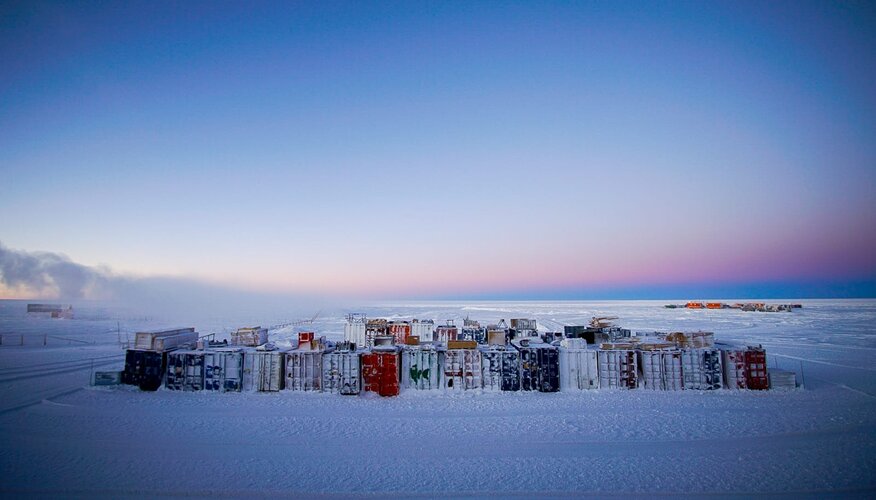ESA-sponsored medical doctor Nick Smith snapped this photo of the storage containers at Concordia research station in Antarctica shortly before sunset, 8 April 2021. The dark blue line at the horizon is the shadow of the Earth.
The containers store food, recycling and the scientific samples of blood, saliva, and stool that Nick routinely takes. The units on the right are part of the summer camp, during which researchers sleep in tents.
Science for the benefit of space exploration does not only happen off planet. While some studies require the weightless isolation of the International Space Station, Antarctica also provides the right conditions for investigating the consequences of spaceflight, and it is a little easier to access than space.
Part of the 17th crew to spend an entire year at one of the most remote bases in the world, Nick and 11 other crew members have taken up the adventurous challenge in the backdrop of a pandemic to continue important research that is furthering space exploration.
Located at the mountain plateau called Dome C, Concordia is a collaboration between the French Polar Institute and the Italian Antarctic programme, and is one of only three bases that is inhabited all year long.
As well as offering around nine months of complete isolation, Concordia’s location at 3233 m altitude means the crew experience chronic hypobaric hypoxia – lack of oxygen in the brain.
During the Antarctic winter, the crew of up to 15 people also endure four months of complete darkness: the sun disappears from May and is not seen again until late August.
Temperatures can drop to –80°C in the winter, with a yearly average of –50°C. The temperature at the time of this image was -65°C, with wind chill at about -80°C. To put this cold into perspective, it was so cold that the camera battery died within ten minutes.
As a station set in Earth’s harshest space, Concordia is an ideal stand-in for studying the human psychological and physiological effects of extreme cold, isolation and darkness. For the rest of the year, Nick is poking and prodding the crew for samples to study changes in mood, immune systems, blood cells, and gut health.
Follow his adventures on the Chronicles from Concordia blog.



 Image:
Image: